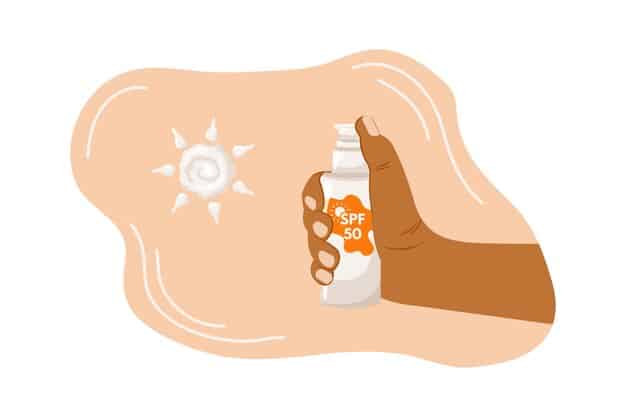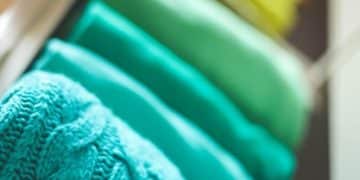Skincare Routine SOS: Stop Wasting $500 a Year on Mistakes

Fixing common skincare routine mistakes that may be costing you around $500 a year involves identifying ineffective products, optimizing application techniques, and understanding personalized skincare needs to ensure better results and avoid unnecessary expenses.
Are you unknowingly throwing money down the drain with your current skincare routine? It’s time for a skincare routine SOS: fixing common mistakes that cost you $500 a year is easier than you think!
Identifying the Culprits: Overspending on Ineffective Products
One of the biggest money pits in skincare is investing in products that simply don’t deliver. Often, this is due to a lack of understanding about your skin type and what it truly needs. Let’s delve into how to pinpoint these ineffective products and redirect your spending.
Understanding Your Skin Type
Before you splurge on the latest serum or cream, ensure it aligns with your skin type. Using products formulated for oily skin on dry skin, or vice versa, is a surefire way to waste money.
Reading the Ingredient List
Become a label detective! Learn about common skincare ingredients and their benefits. Avoid products loaded with fillers or ingredients known to irritate your skin. Look for active ingredients that address your specific concerns.
- Research ingredients: Dig into what each ingredient does and if it is right for your skin type
- Avoid Fragrance: Added fragrance can cause skin irritation and serve no purpose
- Patch test: Before committing to a product, try it out on a small area of skin to make sure it won’t cause irritation

Many people spend a fortune on celebrity-endorsed products or trendy new releases, without considering whether they’re actually suitable. Marketing hype often leads to impulse buys that end up gathering dust in your bathroom cabinet. Next time, do some research and consider if the product helps with your skin issues.
Identifying products that don’t work for your skin and preventing impulse buys are crucial first steps. This allows you to make more informed decisions, potentially saving you hundreds of dollars annually.
The Application Fiasco: Are You Using Products Correctly?
Even the most effective skincare products can fall short if not applied correctly. The way you apply your products, the order, and the amount can significantly impact their efficacy. Correct application is key, let’s discuss how to do it.
Layering Products Effectively
The order in which you apply your skincare products matters. A general rule of thumb is to apply products from thinnest to thickest. This allows each product to properly penetrate the skin.
Using the Right Amount
More isn’t always better. Using too much product can not only waste it but also potentially irritate your skin. Follow the product instructions and use the recommended amount. A pea-sized amount of serum can often be sufficient for the entire face.
- Start small: Begin with a small amount, you can always add more
- Pat in: Don’t rub, instead pat the product into your skin so it can absorb properly
- Be gentle: Avoid tugging or pulling on your skin, especially around the eyes
Skipping essential steps like exfoliation or proper cleansing can hinder the absorption of your skincare products. Building a routine with correct order is vital.

Optimizing your skincare application significantly boosts the effectiveness of your products. Make sure to consider the amount, layering products, and the right steps for your routine. This helps you use less product over time while still achieving great results.
DIY Disasters: When Home Remedies Backfire
DIY skincare can seem like a budget-friendly alternative, but it often leads to more harm than good. Improperly formulated DIY concoctions can irritate, inflame, and even damage your skin. Before following a DIY skincare recipe, proceed with caution.
The Risks of Using Kitchen Ingredients
While some kitchen staples like honey and oatmeal can be beneficial for the skin, others can be incredibly harmful. Lemon juice, for example, is highly acidic and can disrupt the skin’s pH balance, leading to irritation and hyperpigmentation.
The Importance of Formulation Knowledge
Creating effective skincare products requires a deep understanding of cosmetic chemistry and formulation. Simply mixing ingredients together without proper knowledge can result in unstable, ineffective, or even dangerous products.
Many DIY recipes lack preservatives, making them prone to bacterial contamination. Using expired or contaminated ingredients can lead to skin infections and other problems. When it comes to skincare, stick to properly formulated products.
Avoiding DIY skincare saves you money on potential dermatologist visits and corrective treatments, making it a safer and more cost-effective long-term strategy.
The Sunscreen Snafu: Underprotection and Its Consequences
Sunscreen is a non-negotiable component of any effective skincare routine. However, many people either skip sunscreen altogether or don’t use it correctly, leading to sun damage, premature aging, and an increased risk of skin cancer. This is one component of the skincare routine you never want to skip.
The Importance of Daily Sunscreen Use
Sun exposure is a primary driver of skin aging. Daily sunscreen use, even on cloudy days, can significantly reduce the risk of wrinkles, age spots, and other signs of sun damage.
Choosing the Right Sunscreen
Opt for a broad-spectrum sunscreen with an SPF of 30 or higher. Broad-spectrum means the sunscreen protects against both UVA and UVB rays. Choose a formula that suits your skin type and lifestyle, whether it’s a lightweight lotion, a mineral sunscreen, or a tinted moisturizer.
- Broad-spectrum: Protect against both UVA and UVB rays
- SPF 30 or higher: Provides adequate protection for daily use
- Reapply: Every two hours, especially after sweating or swimming
Many people underestimate the amount of sunscreen needed for adequate protection. According to dermatologists, you should use about a shot glass full of sunscreen for your entire body and a teaspoon for your face.
Investing in a quality sunscreen and using it diligently can save you from costly treatments for sun damage down the line. This is a simple step and is very effective.
Ignoring Professional Advice: The Cost of Guesswork
While online resources and product reviews can be helpful, they can’t replace the expertise of a qualified dermatologist or esthetician. Seeking professional advice can help you create a personalized skincare routine that effectively addresses your unique needs.
Benefits of Consulting a Dermatologist
Dermatologists can assess your skin type, diagnose skin conditions, and recommend appropriate treatments. They can also provide guidance on choosing the right products and ingredients for your skin.
The Value of a Professional Skin Analysis
Many estheticians offer professional skin analysis services that can identify underlying issues and provide insights into the overall health of your skin. This analysis can help you make informed decisions about your skincare routine.
Treating existing skin conditions can become expensive when you try to self-diagnose and treat conditions. Talking to a professional leads to a plan that saves you money in the long run.
Seeking professional guidance ensures that you’re investing in the right products and treatments for your skin which saves you money in the process. This minimizes the risk of purchasing unnecessary products or exacerbating existing skin conditions.
Falling for Marketing Traps: The Allure of Luxury Brands
The skincare industry is rife with marketing tactics designed to convince you that expensive, luxury brands are the key to flawless skin. However, the price tag doesn’t always equate to superior efficacy. Consider your options before spending blindly.
Understanding the Value Proposition
While some luxury brands offer high-quality formulations and innovative ingredients, many simply rely on fancy packaging and celebrity endorsements to justify their prices. Look beyond the hype and consider the actual ingredients and benefits of the product.
Exploring Affordable Alternatives
Many affordable skincare brands offer effective products with similar ingredients to their luxury counterparts. Don’t be afraid to experiment with different brands and find what works best for your skin without breaking the bank.
- Compare ingredients: See if similar ingredients can be found in similar products
- Check Reviews: Make sure that what you are about to buy meets your expectations
- Do your research: Make sure to research the brand before purchasing
Falling for marketing traps can lead to a costly skincare routine filled with products that don’t deliver on their promises. By being a savvy consumer, you can avoid unnecessary expenses and focus on what truly works for your skin. High price doesn’t always equal high value.
Staying informed helps you spend wisely and effectively. You don’t have to spend thousands of dollars to achieve healthy and radiant skin.
| Key Point | Brief Description |
|---|---|
| 🔍 Identify Ineffective Products | Recognize and stop using products that don’t suit your skin type or provide benefits. |
| 🧴 Correct Application Matters | Properly apply products in the right order and amount for maximum effectiveness. |
| 🚫 Avoid DIY Disasters | Skip homemade remedies that can harm your skin; stick to professionally formulated products. |
| ☀️ Sunscreen is Key | Use sunscreen daily and reapply to prevent sun damage and save on future treatments. |
FAQ
▼
Observe how your skin feels throughout the day. If it’s shiny, you likely have oily skin; if it’s tight or flaky, you may have dry skin. Combination skin has both oily and dry areas.
▼
Apply products from thinnest to thickest: cleanser, toner, serum, moisturizer, and sunscreen. This allows each product to penetrate the skin effectively.
▼
Not necessarily. Price doesn’t always equal quality. Focus on ingredients and reviews rather than just the brand name to find effective products.
▼
It depends on your skin concerns. If you have specific issues like acne or eczema, see a dermatologist regularly. Otherwise, an annual checkup is a good idea.
▼
A basic routine includes cleansing, moisturizing, and sunscreen. You can then add targeted treatments like serums based on your skin’s needs.
Conclusion
By identifying ineffective products, optimizing application techniques, avoiding DIY disasters, prioritizing sunscreen, trusting professional advice, and being a savvy consumer, you can transform your skincare routine. It can become more cost-effective and yield better results without breaking the bank.





